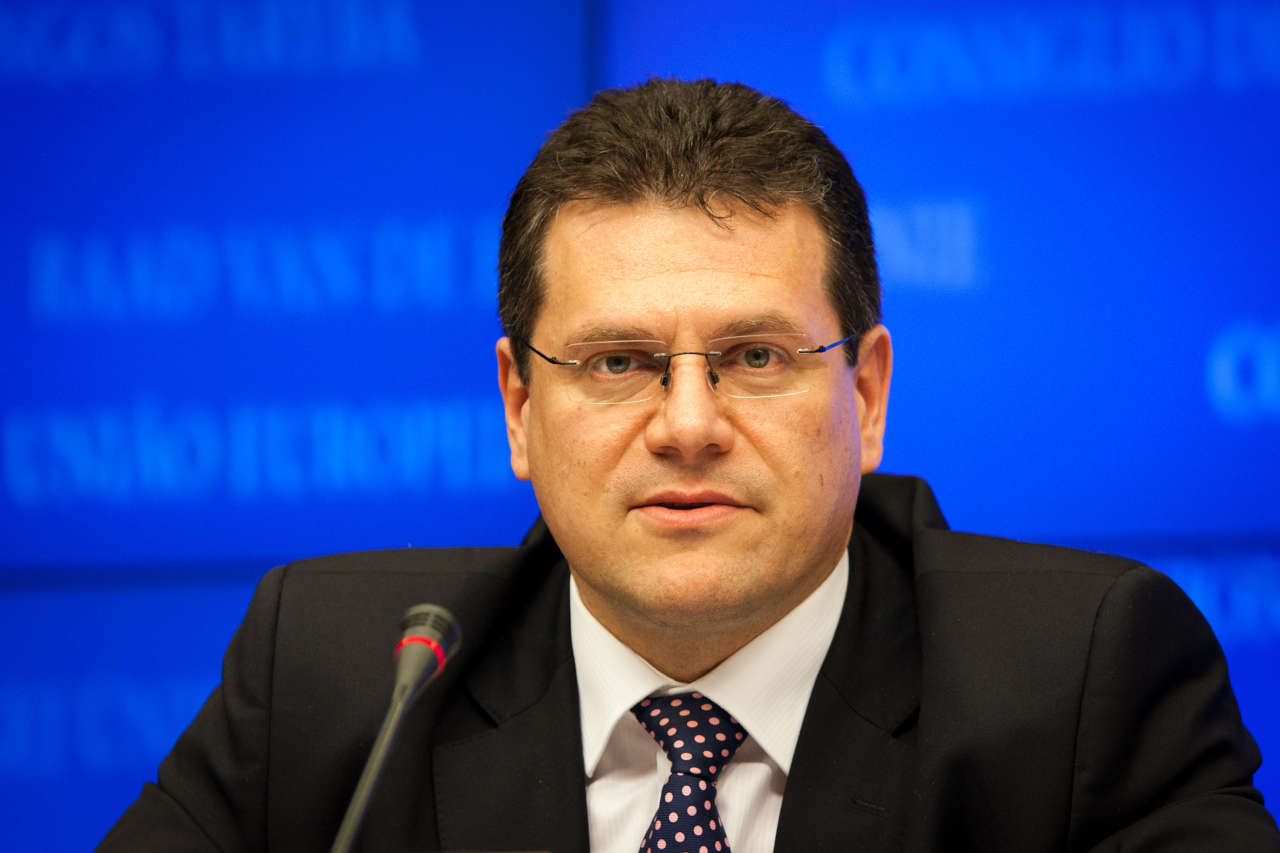Talks on Turkmen gas supply to Europe progressing well

By Aynur Karimova
The European Union, which eyes diversifying natural gas supply routes for decreasing energy dependence from Russia, has intensified talks to get “blue fuel” from energy-rich Turkmenistan with the governments and relevant agencies of Azerbaijan, Turkey, Georgia and Turkmenistan.
Maros Sefcovic, European Commission’s vice-president for Energy Union believes that the negotiations on delivery of Turkmen blue fuel to European consumers are progressing quite well.
“We are currently working together with Azerbaijan, Turkey, Georgia and Turkmenistan on the ways how Turkmenistan could become also a supplier of the gas for Europe, and how we can use the Southern Gas Corridor route for the deliveries,” Sefcovic told Trend on February 28.
Turkmenistan, being one of the key players in the gas market of the Caspian Sea region and Central Asia, produces about 70-80 billion cubic meters of gas a year. It sits on some 17 trillion cubic meters of natural gas, with some estimates placing that figure upwards of 25 or 26 trillion cubic meters.
Given the country's huge reserves and plans to diversify routes, Turkmenistan has been consistently promoting the Western vector of energy partnership. The country is considering the European market as one of the most promising areas of gas supply.
EU countries, in turn, attach great importance to the development of cooperation with Turkmenistan. Given the mutual interest of the sides, the partnership between Turkmenistan and the EU promises to be very perspective and mutually beneficial in the near future.
“We started the so-called Ashgabat declaration process last year, where we set up the working group which is looking for all the possible options, legal and economical issues linked with this question,” Sefcovic said further commenting on the issue.
This expert group had its last meeting few days ago in Istanbul, where two options of how Turkmen gas could be supplied to Europe were put on the table.
Sefcovic believes that the possibility of Turkmen gas delivery to Europe should be assessed by all the governments.
He also expressed hope that the interested sides will come to this discussion back quite soon.
“I think the priority would be to make sure that Southern Gas Corridor is built on time and there is a possibility to make it even ahead of the schedule, and also to see how we can make sure that the Southern Gas Corridor opens possibility for Turkmenistan to supply gas to Europe as well,” he stated.
The long-awaited Trans-Caspian gas pipeline project is widely regarded as the optimal option to deliver Turkmen blue fuel under the Caspian through Azerbaijan to European consumers. It is proposed to connect the 300-kilometer Trans-Caspian pipeline to the Southern Gas Corridor, envisaging transportation of blue fuel extracted at the giant Shah Deniz field in the Azerbaijani sector of the Caspian Sea.
The negotiations between the EU, Azerbaijan, and Turkmenistan on the Trans-Caspian gas pipeline began in September 2011 and accelerated after the Ukraine crisis. When the EU began to impose sanctions against Russia, the EU expressed interest in the implementation of the pipeline.
Europe sees this route as an opportunity do decrease dependence on Russian gas, while Azerbaijan is interested in the construction of the Trans-Caspian Pipeline as it can gain huge benefits from the transportation of Turkmen gas via its territory.
Experts believe that Turkmenistan and Azerbaijan have every opportunity to implement the project within bilateral activities.
Other suppliers
Sefcovic further said the new developments in Iraq, Iran and East Mediterranean also create an opportunity to receive gas from new potential suppliers.
“But of course, in the end what would need to be judged would be overall demand of the gas in Europe, which we projected for 2030 to be more or less the same as it is today, that is from 380 billion cubic meters to 450 billion cubic meters per annum, and of course what would be the most cost efficient way, how to supply this gas to Europe or to use the Southern Gas Corridor, or to go and use the LNG alternatives,” he noted.
Touching upon the possibility of supply of Iranian gas to Europe, Sefcovic said Tehran will firstly focus on returning to the global oil markets, as domestic gas demand is quite high in the Islamic Republic.
“Iran is one of the countries where gas represents more than 60 percent in domestic energy mix, and despite the fact that it has one of the biggest gas reserves in the world, Iran is currently in a position of net importer, which, I am sure, will change in the near future,” he added.
He stressed that the LNG supplies would be most practical and most probable way for Iran to enter the European gas market, because gas fields are primarily located in the south of that country.
“For Europe, most important issues would be the quality of services, reliability of supplies and price of gas,” Sefcovic stressed. “We want to be open to all potential suppliers.”
Iran’s proven gas reserve stood at 34 trillion cubic meters as of early 2015, according to BP. The country’s share on the world gas market is 17 percent.
After Iran was freed of international sanctions in January 2016, the country has expressed desire to supply gas to Europe. For many years, the Islamic Republic has pursued multiple projects to pipe natural gas to European consumers.
Earlier, Iran stated that LNG export to Europe is its priority. The National Iranian Gas Exports Company plans to construct five plants for LNG production within three years.
--
Aynur Karimova is AzerNews’ staff journalist, follow her on Twitter: @Aynur_Karimova
Follow us on Twitter @AzerNewsAz
